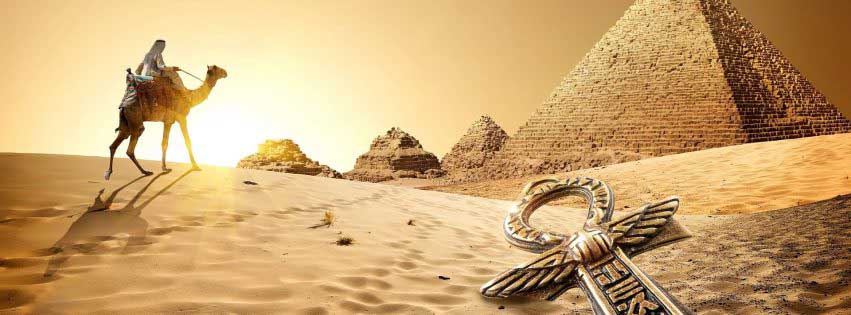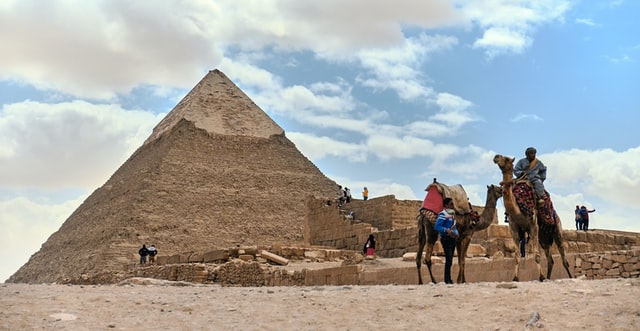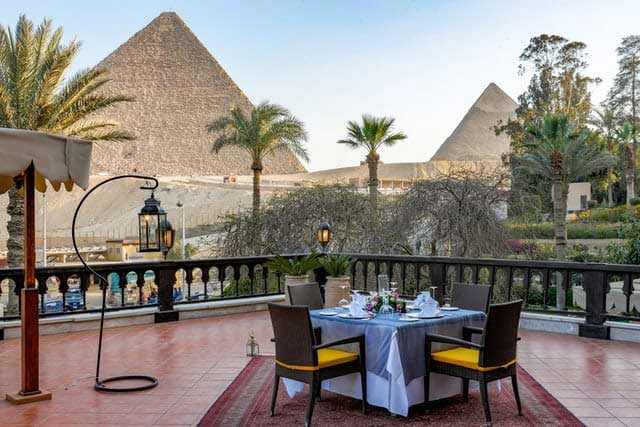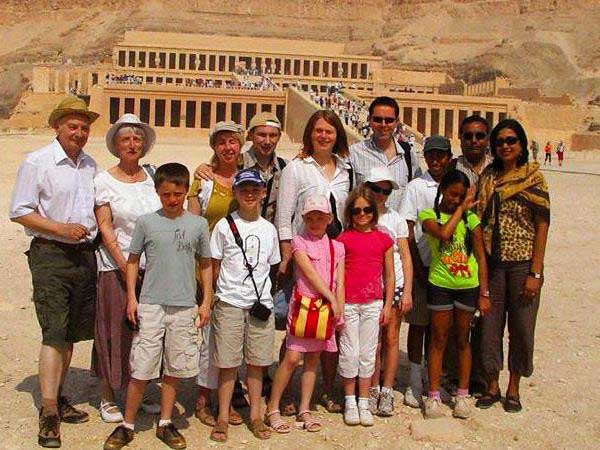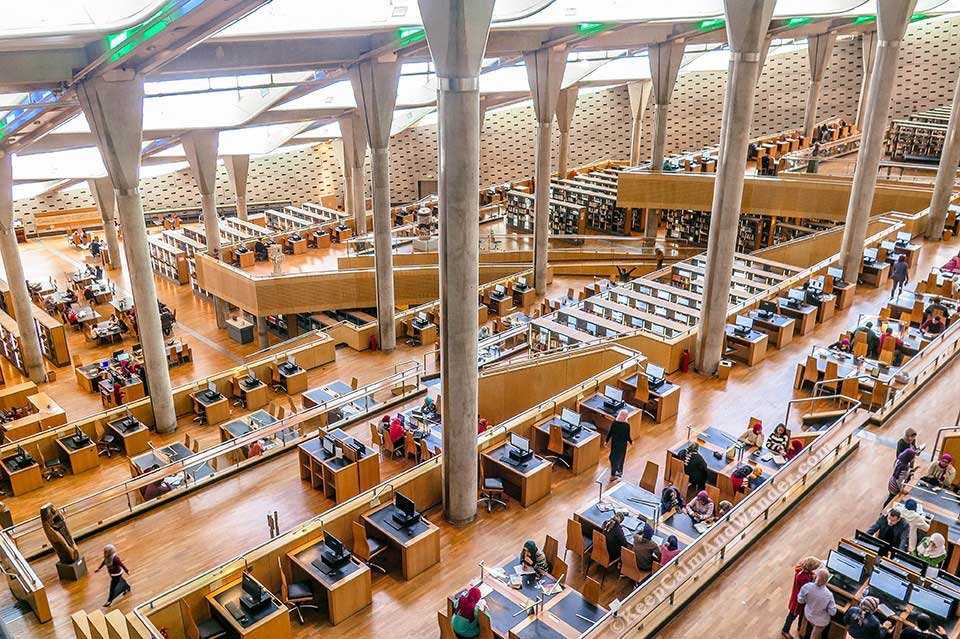Library of Alexandria
The Great Library of Alexandria in Alexandria, Egypt, was one of the largest and most significant libraries of the ancient world. The Library was part of a larger research institution called the Mouseion, which was dedicated to the Muses, the nine goddesses of the arts.
Alexandria Library is regarded as one of the largest and most famous libraries in the world and the modern library of Alexandria acts as a commemoration of the ancient Alexandria library and to the ancient days of glory.
Alexandria Royal library was the first public governmental library in the world history, and was not as the ex-libraries in Egypt which were exclusive only for the pharaohs and the priests, it was said that Alexandria old library contained more than 700,000 different old books, so it was also the biggest library in all the world at that time, it was working not only as a library but also as a university where students were going to study.
East and west old civilization met for the first time in Alexandria royal library through the different books & the different lectures that Alexandria old library hosted at that time. Unfortunately Alexandria Old library was lost, it was burnt.
Taking a hard look at the facts about the Library of Alexandria, there is much we do not know. What it looked like, its exact location, precisely how many books it held, if it burnt, and who destroyed it. We don’t even know if the Library of Alexandria was destroyed at all, due to contradictory texts and the absence of archaeological remains. It isn’t the only wonder to have vanished, as both the tombs of Alexander the Great and Cleopatra were also lost. This is the untold story of the Library of Alexandria.
This article contains information about Alexandria Bibliotheca including:
The History of Alexandria Library
The idea of a universal library in Alexandria may have been proposed by Demetrius of Phalerum, an exiled Athenian statesman living in Alexandria, to Ptolemy I Soter, who may have established plans for the Library, but the Library itself was probably not built until the reign of his son Ptolemy II Philadelphus.
It is believed that around 295 BCE, the scholar and orator Demetrius of Phalerum, an exiled governor of Athens, convinced Ptolemy I Soter to establish the Library. Demetrius envisioned a library that would house a copy of every book in the world, an institution to rival those of Athens itself. Subsequently, under the patronage of Ptolemy I, Demetrius organised the construction of the ‘Temple of the Muses’ or ‘the Musaeum’, from where our word ‘museum’ is derived. This structure was a shrine complex modeled on the Lyceum of Aristotle in Athens, a centre for intellectual and philosophical lectures and discussion.
The library was viewed the cultural center as it contained various works of great writers and thinkers in the world such as Plato, Homer, Herodotus, and Socrates of the ancient Greco-roman times. It contained about 400,000 to 700,000 parchment scrolls on countless subjects to the biggest scholars in many fields.
It was located on the beautiful shore of the Mediterranean Sea and viewed as the first public governmental library in the ancient world and it was public for everyone not only Priests like ancient Egyptian.
Ancient Alexandria
Once home to the massive Pharos lighthouse, one of the Seven Wonder of the Ancient World, the Mediterranean seaport of Alexandria was founded by Alexander the Great around 330 BCE, and like many other cities in his Empire, took its name from him. After his death in 323 BCE, Alexander’s Empire was left in the hands of his generals, with Ptolemy I Soter taking Egypt and making Alexandria his capital in 320 BCE. Formerly a small fishing village on the Nile delta, Alexandria became the seat of the Ptolemaic rulers of Egypt and developed into a great intellectual and cultural centre, perhaps the greatest city in the ancient world.
When was the Library created?
We do not know the exact date of its creation, but it would have been around 300 BC, ordered by either Ptolemy I or Ptolemy II. They were the successors of Alexander the Great, who had invaded Egypt, becoming Pharaoh. They ruled the country from the new capital, Alexandria. This is why, for three centuries, the Pharaohs of Egypt were Greek and why the language written in the Library was Greek.
How many books were held in the Library of Alexandria?
Ancient authors give us vastly different estimates of the number of books the library held. If we order by size what they tell us, the number of books was either 40,000; 54,800; 70,000; 200,000; 400,000; 490,000 or 700,000 books. And by book, one needs to understand it as a papyrus roll. Now, what do ancient texts tell us about the destruction of the Library of Alexandria?
The Burning of the Library of Alexandria
Despite the widespread modern belief that the Library of Alexandria was burned once and cataclysmically destroyed, the Library actually declined gradually over the course of several centuries. This decline began with the purging of intellectuals from Alexandria in 145 BC during the reign of Ptolemy VIII Physcon, which resulted in Aristarchus of Samothrace, the head librarian, resigning from his position and exiling himself to Cyprus. Many other scholars, including Dionysius Thrax and Apollodorus of Athens, fled to other cities, where they continued teaching and conducting scholarship. The Library, or part of its collection, was accidentally burned by Julius Caesar during his civil war in 48 BC, but it is unclear how much was actually destroyed and it seems to have either survived or been rebuilt shortly thereafter; the geographer Strabo mentions having visited the Mouseion in around 20 BC and the prodigious scholarly output of Didymus Chalcenterus in Alexandria from this period indicates that he had access to at least some of the Library’s resources.
The Library dwindled during the Roman Period, due to a lack of funding and support. Its membership appears to ha ceased by the 260s AD. Between 270 and 275 AD, the city of Alexandria saw a rebellion and an imperial counterattack that probably destroyed whatever remained of the Library, if it still existed at that time. The daughter library of the Serapeum may have survived after the main Library’s destruction. The Serapeum was vandalized and demolished in 391 AD under a decree issued by Coptic Christian Pope Theophilus of Alexandria, but it does not seem to have housed books at the time and was mainly used as a gathering place for Neoplatonist philosophers following the teachings of Iamblichus
The last Director of the Great Library
The last recorded Director of the great Library was scholar and mathematician Theon (c. 335 – c. 405 CE), father of the female philosopher Hypatia, brutally murdered by a Christian mob in Alexandria in 415 CE. Perhaps one day, in the deserts of Egypt, scrolls that were once part of the great Library will be discovered. Many archaeologists believe that the buildings that once composed the legendary seat of learning at ancient Alexandria, if not buried under the modern metropolis, could still survive relatively intact somewhere in the north-eastern part of the city.
The Rebirth of Alexandria Library as Bibliotheca Alexandria
Two millennia after being created, the Library of Alexandria was reborn. First, in the 18th century, when museums became modern successors of the Museum of Alexandria. Then, in 2002, when a new library, the Bibliotheca Alexandrina, opened as heir to the lost one as “A center of excellence in the production and dissemination of knowledge, as well as a meeting place for the dialogue of peoples and cultures.”
The immense gap between the myth and the reality, that we know so little of, is difficult to fathom. Precisely because the Great Library vanished without a trace, the myth has been magnified over centuries. As a result, the only limit to Alexandria’s wonders is our imagination. Additionally, the lack of clarity as to when the library disappeared and who’s responsible means we blame our chosen villain for its loss.
How the Library looks like nowadays?
The new library of Alexandria is located on the Eastern Harbor on or near the site of the original. The project became a reality with the help of the UNESCO and was inaugurated on 16 October 2002. It is quite famous for being the world’s sixth largest Francophone library in the world.
The library is trilingual as it contains book in Arabic, English, and French and holds the largest depository of French books in north Africa and the middle east, it contains Six specialized libraries for arts and multimedia which are the library of Taha Hussein for the visually-impaired, the rare books and special collection, the children’s library, the young people’s library, and the microforms library.
A copy of the internet archive, four Museum, High-tech digital collections, thirteen academic research centers and four art galleries for temporary exhibitions.
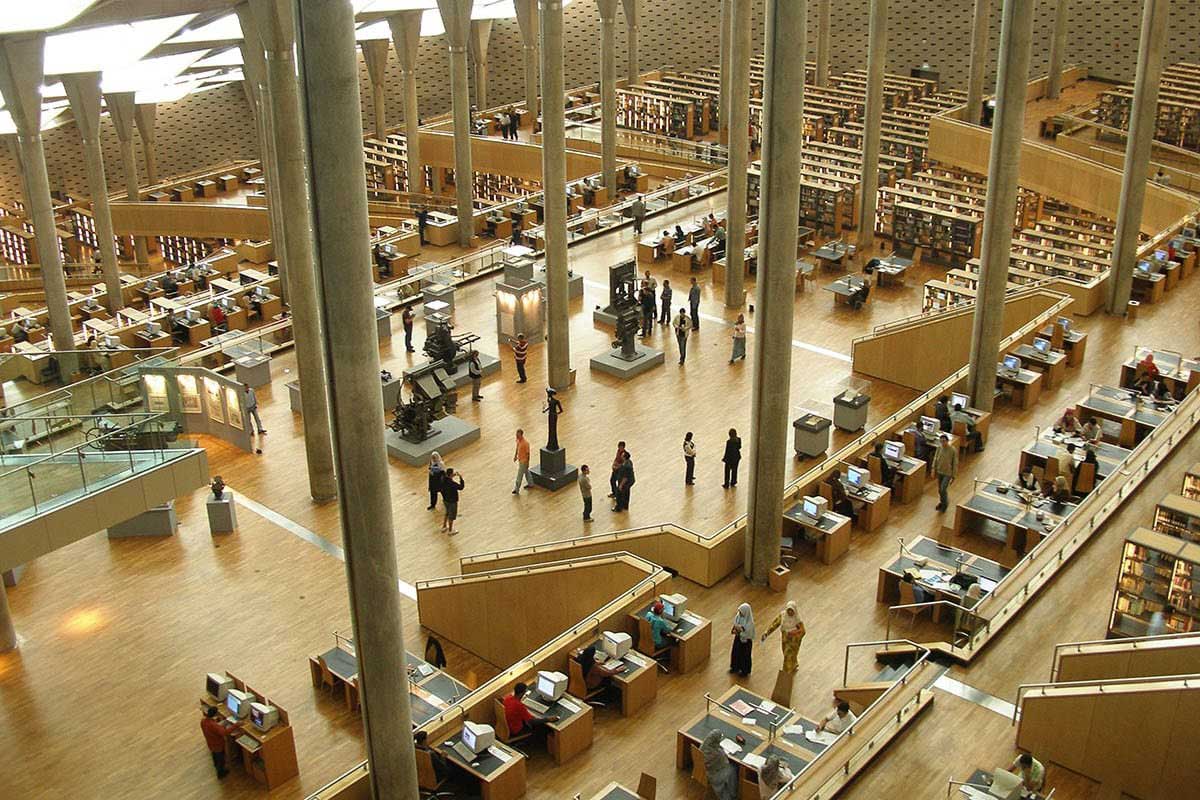
How much does it cost to visit the Alexandria Bibliotheca?
Tickets, which cost 70 Egyptian pounds (approximately $5) for adults and 10 Egyptian pounds (less than $1) for students and kids, can be purchased at the entrance’s visitors center.
Recommended Tours to Alexandria Bibliotheca:
Frequently asked questions about visiting Egypt
Is it safe to travel to Egypt
Is it safe to travel to Egypt?
Is Egypt Safe for Americans to Travel to
Is Egypt Safe for Americans to Travel to?
We get this question a lot at Bastet Travel In short, Americans and other visitors can rest easy: yes, Egypt is a safe country for tourists. And the rest of the world seems to agree — after years of middling numbers, tourism in Egypt is steadily rising towards its former highs, hosting over 9 million sightseers in 2018. The longer answer is worth exploring, though, and we have some assurances to offer all our clients who join us on all of our Egypt Travel Packages.Is a negative COVID-19 test (PCR and/or serology) required for entry?
- Yes.
- All passengers travelling to Egypt (including Egyptians) must be in possession of negative PCR test certificate for COVID-19, taken at a maximum of 72 hours before their flight departure time.
- Passengers travelling from Japan, China, Thailand, North America, South America, Canada, London Heathrow, Paris, and Frankfurt will be allowed to provide the test certificate performed at a maximum of 96 hours prior to flight departure, due to the long travel and transit period from these airports.
- Although we understand the PCR testing policy to require a test result performed no more than 96 hours before the original departing flight, we have received anecdotal reports that some travelers have been denied entry when their PCR test was performed more than 96 hours prior to the departure of their connecting flight.
- Travelers must present paper copies of the test results; digital copies will not be accepted.
- Children under the age of six of all nationalities are exempt.
Are PCR and/or antigen tests available for US citizens in Egypt?
Yes, at numerous private testing centers, as well as the Central Public Health Lab.
Has the government of Egypt approved a COVID-19 vaccine for use?
Yes
Which vaccines are available in Egypt?
AstraZeneca and Sinopharm.
Are vaccines available in Egypt for tourists to receive?
Yes, the media has reported that anyone over age 18, including foreign residents, can now register for the vaccine. There is limited supply of the vaccine available and the media reports that priority for the vaccine will go to the elderly and those with chronic illnesses.
Are test results reliably available within 72 hours?
Yes. Most test providers offer 48-hour turnaround. Faster service is possible at extra cost.
How can I obtain my Visa to visit Egypt?
How can I obtain my visa to visit Egypt?
What do i need to know when traveling to Egypt?
A few Things to Know Before Traveling to Egypt
You need a visa, and you can buy it upon arrival. The dollar goes far in Egypt. The traffic in Cairo/Giza is outrageous, but taxis (and Ubers) are cheap. You should not skip the Pyramids and Sphinx. The Pyramids and Sphinx are just the beginning of the ancient treasures. Islamic Cairo is amazing. Aswan should not be missed The Sahara is more than sand It is safer than you thinkWhat are the best day trips in Egypt
What are the most famous tourist attractions in Egypt
What are the most famous tourist attractions in Egypt?
Egypt has so much for travelers to see and do, it’s the perfect country for a mix of activities combining culture, adventure, and relaxation. Find the best places to visit with our list of the top tourist attractions in Egypt.- Pyramids of Giza
- Valley of the kings
- Luxor’s Karnak Temple
- The Egyptian Museum
- Christian and Islamic Cairo
- The White Desert and Baharyia Oasis
- Siwa Oasis
- Abu simbel Temples
- Aswan
- Alexandria
- St. Catherine’s Monastery
- The Nubian village
- Nile River Cruise
- Hurghada
- South of Sinai
Related Articles
Related
Seth
Also known as Set, Setekh, Suty and Sutekh, Seth was the god of chaos, darkness, violence, evil, deserts, storms, and one of the Osirian gods. In the Osiris myth, he is the murderer of Osiris (in some versions of the myth, he tricks Osiris into laying down in a coffin and then seals it shut.)
Ancient Egyptian Gods And Goddesses
For all ancient Egyptians, the world was filled with mystery. Much of what they experienced in the world around them was unknowable and frightening. The ancient Egyptian gods and goddesses represented aspects of the Egyptians’ natural and “supernatural” surroundings and helped them understand its many aspects.



